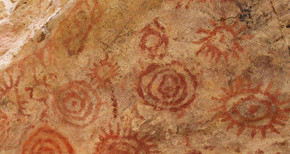SAA Celebrates 30 Years of NAGPRA
Begins Revision of Statement on the Treatment of Human Remains
Thirty years ago, the Native American Graves Protection and Repatriation Act (NAGPRA) transformed our field by laying crucial groundwork for a more ethical approach to archaeology. As part of our obligation to continue to improve the ethical practice of archaeology, the SAA is preparing to update our Statement on the Treatment of Human Remains and is soliciting member input in this process.
SAA President Joe Watkins released the following letter to membership concerning NAGPRA and the Statement drafting process.
November 16 will mark the anniversary of a pivotal moment in American archaeology—the passage of the Native American Graves Protection and Repatriation Act (NAGPRA). NAGPRA is a landmark human rights law that formally acknowledges tribal sovereignty. It establishes a legal framework for Tribes to repatriate their ancestors and a pathway to repatriate their culture. Its passage transformed the practice of archaeology in the field, labs, research institutions, and museums.
Both CNAR and Repat are reaching out to the relevant SAA committees, task forces, and interest groups for their expertise and suggestions. In order to include as many voices within the SAA as possible, the SAA invites all members to provide their comments, experiences, and resources to help in drafting the new statement. Please submit your contributions via email to hrstatementrewrite@gmail.com. This mailbox will be monitored by the CNAR and Repat committee chairs and comments will be kept anonymous. Updates will be provided in the January and March 2021 issues of The SAA Archaeological Record.



